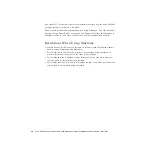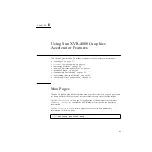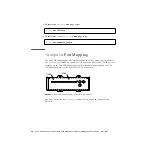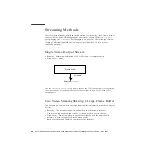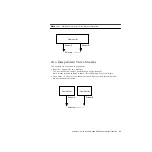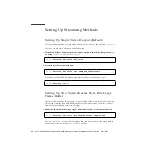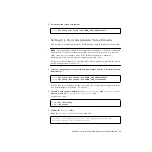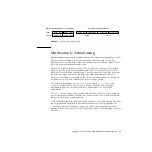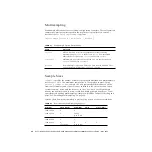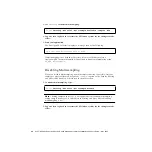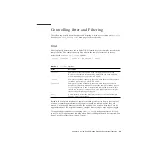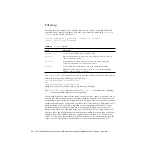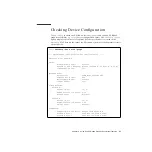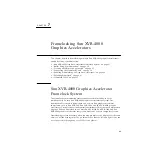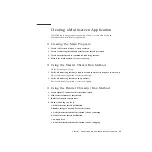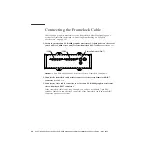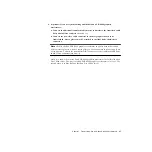
50
Sun Fire V880z Server and Sun XVR-4000 Graphics Accelerator Installation and User’s Guide • May 2003
Filtering
Filtering accesses samples from a buffer segment (A or B) of a sample buffer and
generates video pixels for display. You may select from the predefined
fbconfig
-filter
options listed in
-filter [cylinder | gaussian | mitchell | catmull]
-filter_file filter_filename
The
-filter_file
option enables users to provide their own filter by producing a
filter file and copying or linking it into directory
/etc/openwin/server/etc/filters
or
/usr/openwin/server/etc/filters
(Both directories are writable only by superuser by default.)
The
filter_filename
must not start with “/” or “../” nor contain the substring
“/../”, but may contain subdirectory components.
Filters with negative weights (often called “negative lobes”) cause a video pixel to be
the result of subtracting a portion of nearby samples. Negative lobe filters provide
antialiasing while still preserving details such as edges. However, they can produce
artifacts near the edges of light and very dark colors (for example, light objects on a
black background). Negatively weighting a color component can lead to a video
pixel component less than 0, which must be clamped to black; there is no color
blacker than black. The clamping leads to visual artifacts. When using filters with
negative lobes, the background color components should be greater than the filter’s
negative lobes. The Mitchell filter has negative lobes less than 3.7%; Catmull, less
than 7.5%. (For the Catmull example, if the maximum color component used in the
scene is 1.0, no significant area should have a color component less than .075.)
TABLE 6-4
-filter
Options
Option
Description
cylindrical
Poorest visual quality, most like a box filter.
gaussian
Blurriest. Suitable for users who wish to forego detail to avoid all
visible sampling artifacts.
mitchell
The best photo-realistic compromise between sharp detail and
noticeable blurriness. This filter is the default.
catmull
The Catmull-Rom filter produces images a little sharper than
Mitchell, but the images are more likely to have visible sampling
artifacts, widely known as “jaggies”.

